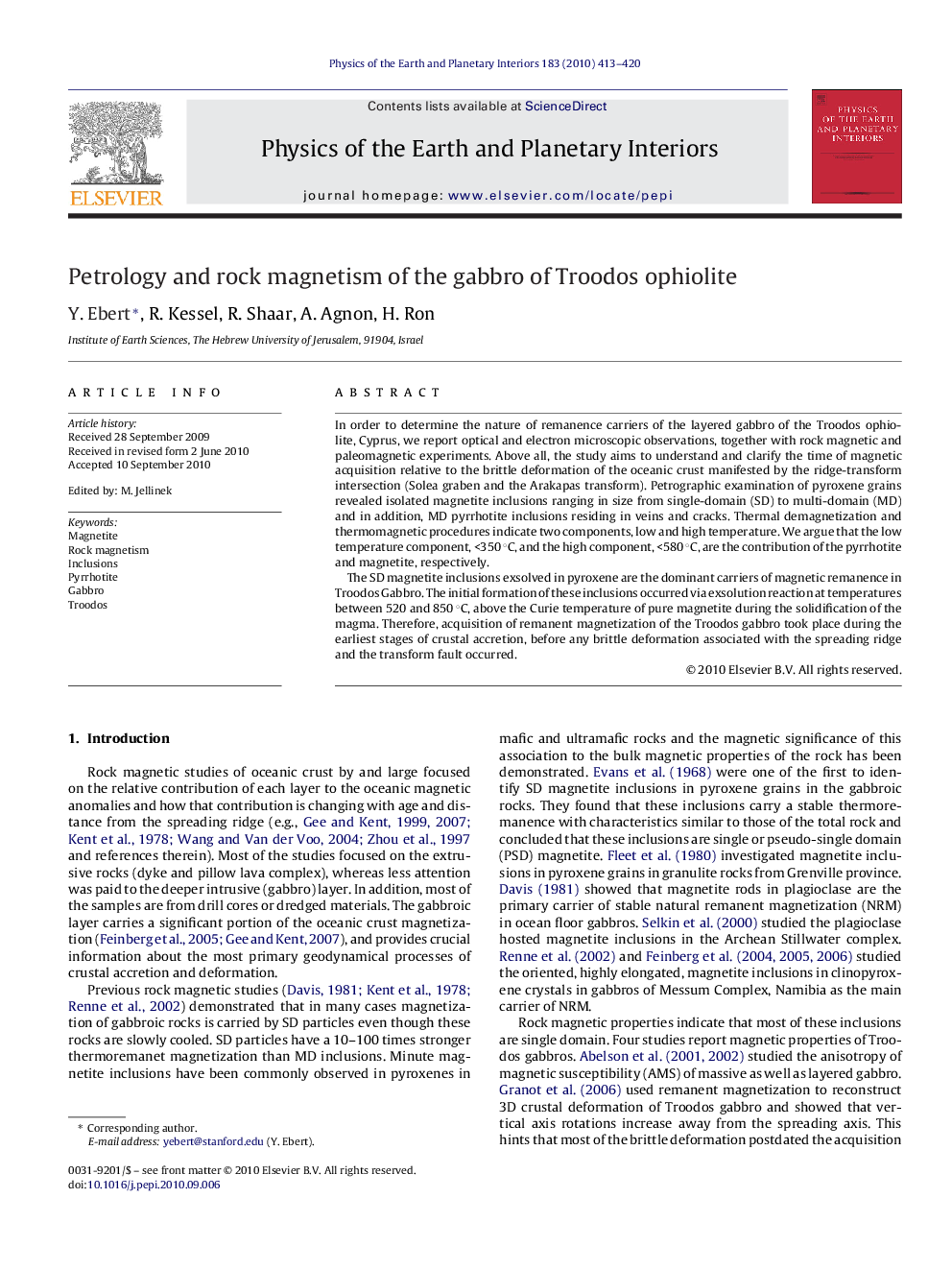| Article ID | Journal | Published Year | Pages | File Type |
|---|---|---|---|---|
| 4742011 | Physics of the Earth and Planetary Interiors | 2010 | 8 Pages |
In order to determine the nature of remanence carriers of the layered gabbro of the Troodos ophiolite, Cyprus, we report optical and electron microscopic observations, together with rock magnetic and paleomagnetic experiments. Above all, the study aims to understand and clarify the time of magnetic acquisition relative to the brittle deformation of the oceanic crust manifested by the ridge-transform intersection (Solea graben and the Arakapas transform). Petrographic examination of pyroxene grains revealed isolated magnetite inclusions ranging in size from single-domain (SD) to multi-domain (MD) and in addition, MD pyrrhotite inclusions residing in veins and cracks. Thermal demagnetization and thermomagnetic procedures indicate two components, low and high temperature. We argue that the low temperature component, <350 °C, and the high component, <580 °C, are the contribution of the pyrrhotite and magnetite, respectively.The SD magnetite inclusions exsolved in pyroxene are the dominant carriers of magnetic remanence in Troodos Gabbro. The initial formation of these inclusions occurred via exsolution reaction at temperatures between 520 and 850 °C, above the Curie temperature of pure magnetite during the solidification of the magma. Therefore, acquisition of remanent magnetization of the Troodos gabbro took place during the earliest stages of crustal accretion, before any brittle deformation associated with the spreading ridge and the transform fault occurred.
